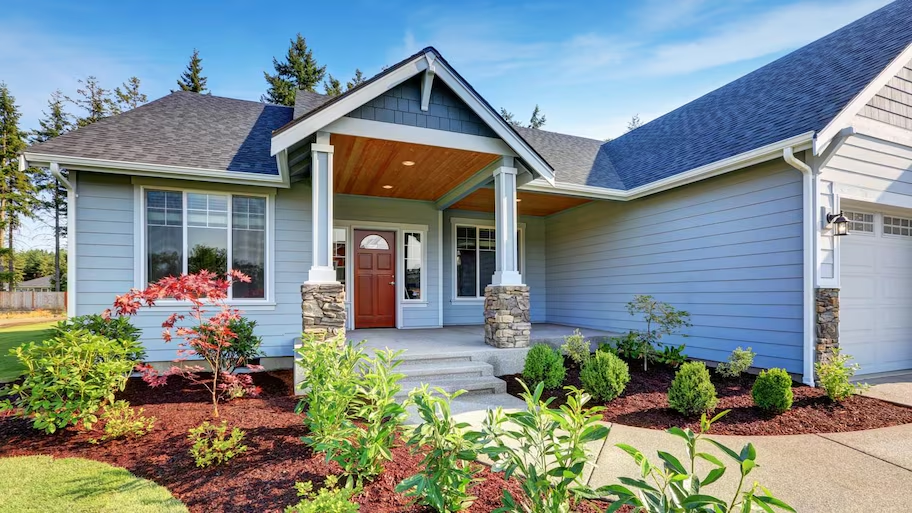Key Takeaways:
This guide provides detailed insights on selecting durable and stylish siding for your home. It offers multiple tips, real-life examples, and expert advice. The focus is helping homeowners make well-informed decisions that enhance their property’s value and aesthetic appeal.
Introduction to Siding
Siding is crucial in safeguarding your home against weather conditions while enhancing its overall aesthetic appeal. Selecting the right siding increases your home’s value and plays a significant role in its durability and maintenance. If you’re considering options like James Hardie siding in Raleigh, NC, you’ll want to ensure you understand all the factors involved in making the best choice for your home.
The market offers a diverse range of siding materials, each with strengths and weaknesses. By understanding these options, you’ll make a more informed decision that best suits your needs and environmental conditions.
Why Siding Material Matters
Choosing the right siding material can be challenging, given the many options available. Each material has a unique set of benefits and maintenance requirements. Homeowners should carefully evaluate these aspects to make an informed decision. Material choice affects the home’s appearance, thermal efficiency, resistance to damage, and overall longevity.
Consider how long you plan to stay in your home and what you’re willing to invest in upfront costs and long-term maintenance. Vinyl siding is affordable and low-maintenance, making it a popular choice. Fiber cement siding offers superior durability and an upscale look, while wood siding provides a classic aesthetic but requires more frequent upkeep.
Popular Siding Material Options
Let’s explore some of the most popular siding materials available on the market:
- Vinyl Siding: Known for its affordability and low-maintenance nature, it remains popular. It is available in various colors and styles, making it versatile for architectural designs.
- Fiber Cement Siding: Many people choose this material to be their favorite because it provides the ideal balance of strength and visual appeal. Fiber cement is extremely resistant to decay and vermin and may be made to seem like brick, stone, or wood.
- Wood Siding: Despite requiring more maintenance, wood siding provides a classic and timeless look. It is highly customizable but may need regular painting or staining to maintain its appearance.
Maintenance and Durability
It is essential to consider the maintenance and durability of siding materials. For example, vinyl siding is known for its water resistance and low maintenance, while wood siding might need regular painting or staining to keep it in pristine condition. Fiber cement, on the other hand, offers a great balance between minimal upkeep and high durability.
Aesthetic Appeal and Architecture
The style of your home and its architectural features should guide your choice of siding. For instance, fiber cement can mimic the appearance of wood, providing versatility without compromising durability. Ensuring harmony between your siding and your home’s architecture enhances your home’s curb appeal. To add even more character and charm, consider incorporating corbels to complement the design and accentuate architectural details.
Cost Considerations
While cost should not be the sole determining factor, staying within your budget is crucial. Vinyl siding is generally the most cost-effective option, whereas wood and fiber cement tend to be more expensive. However, investing in higher-quality materials can lead to long-term savings in maintenance and repairs.
The Role of Climate and Environment
The ideal siding material for your home depends largely on the environment where you live. For example, fiber cement siding is a great option in regions that frequently see hurricanes or intense rainfall because of its reputation for withstanding harsh weather. On the other hand, extremely humid areas might not be the best places for wood siding.
Expert Tips for Choosing Siding
- Assess Your Needs: Determine what you prioritize most—aesthetics, durability, or maintenance.
- Consider Long-Term Costs: Weigh the initial investment against potential maintenance and repair expenses.
- Seek Professional Advice: Consult with siding experts for recommendations tailored to your home’s architecture and climate.
- Review Warranties: Ensure the chosen material has a reliable warranty, offering peace of mind.
- Stay Informed: Keep yourself informed on siding material advancements and current trends.
Molly Famwat is a masterful wordsmith, excelling in crafting all types of content. With a knack for engaging narratives and precise information, Molly turns every piece into a compelling read that resonates with audiences.

